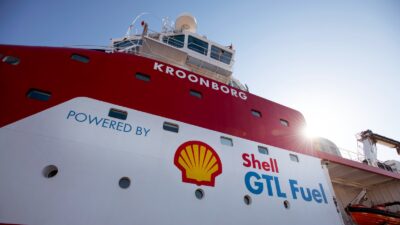CORRECTION: The original version of this article mistakenly referred to “the firm’s recent offshore Ghana discovery”. This has been rectified to “Guyana”.
Tullow Oil (LSE: TLW) shares fell by a fraction under 30% at one point Wednesday, before ending 27% down on the day, setting them back to the same price level they commanded as long ago as summer 2017.
The hit came as a result of a disappointing finding at the firm’s recent offshore Guyana oil discovery, which was originally hoped would produce good quantities of light grade oil. As it turns out, all Tullow has found so far is heavier crude with high sulphur content, which sells at lower prices.
Should you invest £1,000 in Tullow Oil Plc right now?
When investing expert Mark Rogers has a stock tip, it can pay to listen. After all, the flagship Motley Fool Share Advisor newsletter he has run for nearly a decade has provided thousands of paying members with top stock recommendations from the UK and US markets. And right now, Mark thinks there are 6 standout stocks that investors should consider buying. Want to see if Tullow Oil Plc made the list?
The company is still hoping to find better quality oil in the region, but the new Jethro-1 and Joe-1 wells might have to be abandoned if new analysis decides the field is not commercially viable.
Expected?
This kind of stumble is to be expected from an oil explorer and it’s one of the things investors have to be prepared to take in their stride. But for Tullow, it really couldn’t have come at a worse time as the company is still struggling to chip away at its massive debt burden in a period when oil prices are going through a weak patch.
With the first-half results, Tullow told us its net debt figure stood at $2.95bn at 30 June. That was down from the $3.08bn recorded a year previously, and that’s something positive, but it’s still a staggering sum of money.
And what the company thinks it’s doing with its dividend policy is enough to boggle my mind. Tullow approved an interim dividend of 2.35 cents per share, and we’re looking at a forecast full-year yield of 2.9%. Apparently it’s all part of a “capital returns policy of intending to pay shareholders at least $100m per year.”
Dividend policy
Paying how much? When you’re how deep in debt? Sure, $100m might not seem that much when compared to a $2.95bn debt, but it could have elevated the firm’s debt reduction progress in the 12 months to June. In reality, the actual reduction came out at $134m, when that could have been boosted to $234m by giving up the dividends — that would be a 75% boost to the amount chipped off the debt in just one year.
I know, it’s a big bugbear of mine, and I’m always banging on about highly indebted companies paying dividends when I don’t think they should. But paying down debt (especially at the crippling levels that nearly sent Tullow under during the oil crisis) should surely come before what is effectively handing out borrowed money to shareholders.
Guidance
Does it matter now that Tullow is actually making profits and generating cash and the oil price is way above the crunch levels of a few years ago? When Tullow is repeatedly downgrading its full-year production guidance and when the world’s total oil production is still running at a significant surplus over consumption, yes, I think it does.
After the latest setback, it is now predicting around 87,000 barrels per day average, when as recently as June the figure stood in the 90,000-98,000 range.
We’ll have to wait and see how full-year earnings forecasts pan out, but prior to this week’s bad news, the City had Tullow shares on a P/E of 17 for the current year. For a company whose net debt exceeds its market cap, I reckon that’s too expensive.







